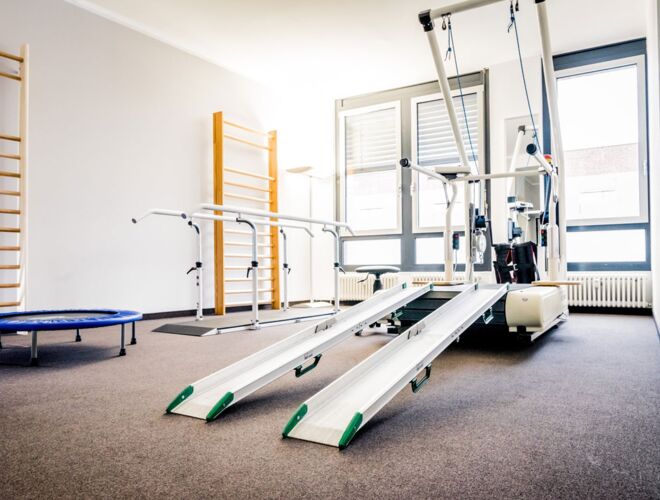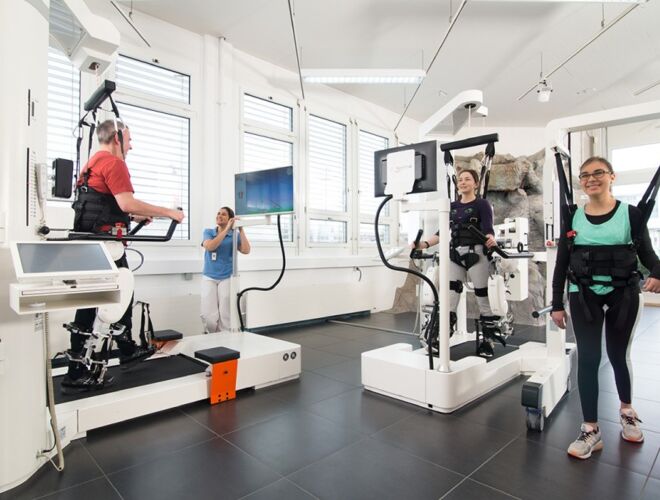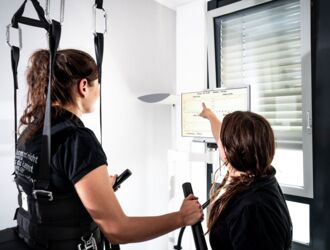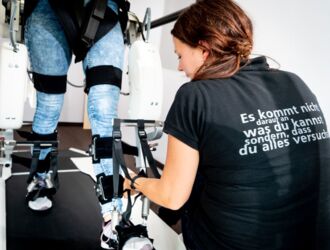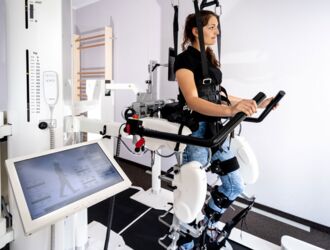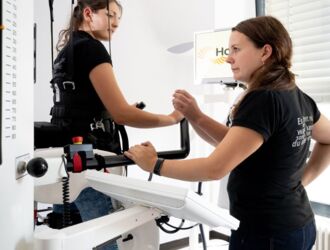“When robots make you get a move on.”
“The worst part about using a wheelchair is that you always have to look up to everyone and everyone is always looking down on you,” this is what nearly every paraplegic and wheelchair user experiences in their day to day life. Being at eye level with everyone, even when moving around on foot, is what a lot of them wish for. For the last couple of years businesses have worked relentlessly to come up with solutions and ways to fulfill that very wish. The results and ideas they have come up with are various types of powered exoskeletons, complete leg orthoses and robotic gait orthoses. When it comes to choosing aids or exercise equipment, it is not only important to consider the exercises a person might need to perform and the preconditions that apply to them, but also the various areas of life that a device covers.
Powered Exoskeletons – Mechanical walking support
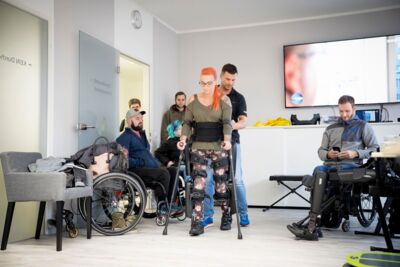
Rehabilitation equipment for learning how to walk again and an alternative mode of transport - exoskeletons are used in both these areas. Before using them a type of brace is attached to the outside of the user’s leg, from their pelvis down to their feet. Sensors situated in the device register weight shifts which in turn tell the internal motors to start simulating the walking process. Companies like ReWalk focus on assisting their customers in the private domain as individual therapeutic aid providers whereas Exobionics sees the utilization of their exoskeletons in the area of in- and outpatient rehabilitation. Of note is that thanks to exoskeletons, users have an actual walking experience again. This feeling of finally being able to walk again is one of the most important improvements in a patient’s life, next to the positive effects on joint functions, cardiovascular stability and the reintegration of a gait pattern into the brain.
The Neuro-Orthopedic Center in the heart of Leipzig is also improving step by step. In addition to the vast array of specialized physical and ergo therapies for neurological patients, we are also proud to work together with Rehability, a medical store specialized in equipment for paraplegics, who moved in right next door to us two years ago and perfectly complemented our treatments for paraplegics and wheelchair users ever since. We now have our very first gait trainer in the form of a rehabilitation treadmill with an orthopedic suspension system.
Treadmills with orthopedic suspension systems
This type of rehabilitation system is less about interacting with a machine and more about interacting with a human being. A therapist is aiding the patient’s legs locomotion process. The suspension system helps by carrying most of the weight which makes it much easier for the patient to stand up and walk on their own. “This training opens up the possibility of walking longer distances than with any other conventional gait therapy. We can focus much more on the correct motion without the patient having to fear that they might fall which also gives us the ability to get the most out of these training sessions. Only very few patients can exercise on their own. Sadly, health care providers do not yet pay for these extra efforts and expenses on the side of the therapist,” said Nicole Fleischhauer (manag. physical therapist at the Neuro-Orthopedic Center for Physical Therapy Leipzig).
The best and most economical solution is training with a Lokomat. Industry Leader Hocoma specializes in Lokomats. We are currently planning to add and integrate the Lokomat into our range of therapies and treatments. Stefan Srugies, owner of the NOZ: “The acquisition and maintenance of a therapeutic aid of this size has to be well thought out and planned.” Robot-aided walking plays an increasingly important role at the NOZ and throughout Germany. It is going to become an integral part of future in- and outpatient treatment concepts. The development of therapeutic equipment is not even close to reaching its limits with many more possibilities and opportunities to be explored. We hope that health care providers will come around and realize this as well, so that companies and medical centers may finally be supported in realizing these projects.
